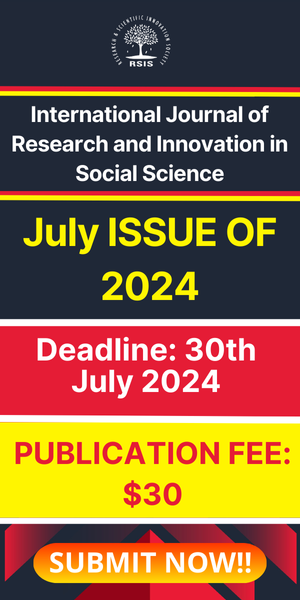Effect of Lower Extremity Strength Training on Gait in Cerebral Palsy Children
- March 19, 2018
- Posted by: RSIS
- Categories: Health Sciences, Physiotherapy
International Journal of Research and Scientific Innovation (IJRSI) | Volume V, Issue III, March 2018 | ISSN 2321–2705
Effect of Lower Extremity Strength Training on Gait in Cerebral Palsy Children
K.Vadivelan1, N. Gomathy Ramakrishnan2
1Associate Professor, SRM College of Physiotherapy, SRM Institute of Science and Technology, Kattankulathur, Tamil Nadu, India
2SRM College of Physiotherapy, SRM Institute of Science and Technology, Kattankulathur, Tamil Nadu, India
Abstract:-
Objectives: To evaluate and examine whether strengthening lower extremity improves gait speed, cadence and stride length and motor activity in cerebral palsy children.
Design: Experimental design, Randomized controlled trial.
Settings: The study was conducted at the Spastic Society of Tamil Nadu, Taramani and Royapuram, Chennai.
Procedure: 30 Subjects with age group 5-14 years with diplegic cerebral palsy who can walk for atleast 45m with GMFCS level I and II are divided into two groups, one group is controlled where as other was an experimental group. Group-A trained with strength training and Group-B receives conventional physiotherapy.
Results: The significant results of this study shows improvement in gait performance in the experimental group form mean value 98 in pre-test to 123.7 in post-test.
Conclusion: The study concludes that there was significant improvement of gait performance with short programme of lower extremity strength training than 5 week lower extremity training in control group.
I. INTRODUCTION
CEREBRAL PALSY [CP] is a collection of disorders characterized by an insult to the developing brain that produces physical disability as the primary or distinguishing feature. It is a non-progressive neurological disorder affecting approximately 1.5-2.5 per 1000 born in india. The spastic form of CP is the most common and is the most common and in those patients, additional clinical signs may include, muscle shortening, diminished selective control, and weakness. It is well recognized that muscle weakness is a major impairment in people with cerebral palsy. Many children with CP quickly become exhausted because of disease impact on muscle which requires high energy expenditure often lack endurance and suffer from muscle weakness. Spasticity was once thought to be the primary contributor to the motor dysfunction noted.


